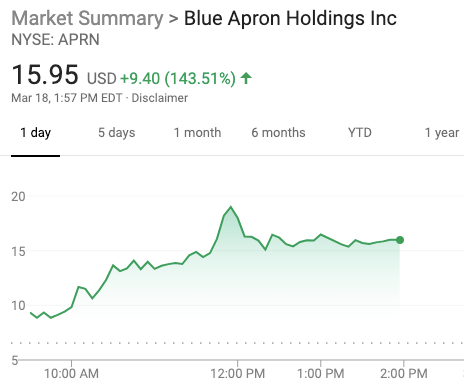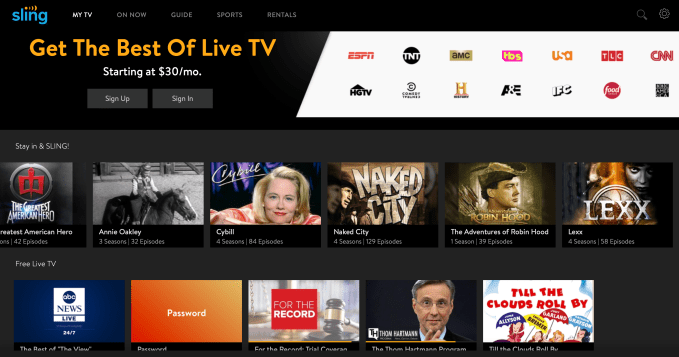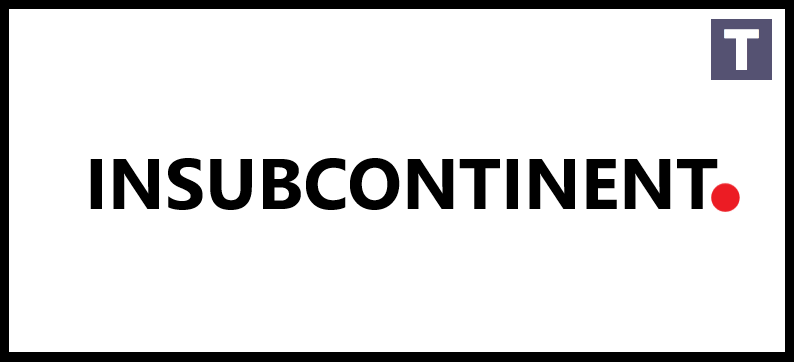Music
Trailers
DailyVideos
India
Pakistan
Afghanistan
Bangladesh
Srilanka
Nepal
Thailand
Iraq
Iran
Russia
Brazil
StockMarket
Business
CryptoCurrency
Technology
Startup
Trending Videos
Coupons
Football
Search
Download App in Playstore
Download App
Best Collections
Technology

Itbeen a bonkers week in the world, with markets gyrating, companies fretting, investors tweeting and founders re-cutting their 2020 forecasts. But for one collection of startups, the past few days weren&t about work crises or the latest Slack share price. Instead, for Y Combinator Winter batch, it was Demo Day week.
TechCrunch has covered Y Combinator companies since time immemorial. And we&ve been present throughout a number of format changes over the years. We&ve been around for things like the old single-day events in the South Bay computer history museum, and we&ve been around for the SF era. Hell, we were there for the two-stage concept.
But this yearDemo Day brought with it something altogether new: No in-person pitches and demos. Yep, in response to COVID-19, Y Combinator made its demo day virtual, even scooting up its presentations by a full week. Obviously we tuned in en masse, writing a host of posts about the presenting companies (read them here, here, here and here). We also caught up with CEO of Y Combinator, Michael Seibel, to here his take on whatahead for the accelerator.
Given the scale of change, however, we weren&t content with just those entries. So, we gathered the TechCrunch crew, hopped on a Zoom, invited in our friends until our Zoom account maxed out (we didn&t know that that was a thing; more capacity coming) to chat over observations and the most interesting startups. We didn&t even miss the usual slew of Y Combinator live tweets — for the most part.
Hit the jump and we&ve got the recording for you. And see which companies the TechCrunch staff liked the most.
The Chat
- Details
- Category: Technology Today
Read more: Listen to the TechCrunch staff’s YC Demo Day wrap-up call here
Write comment (98 Comments)Back in 2017, a formerly hot, formerly profitable company called Blue Apron went public. It didn&t go well. Today as the global stock market continues to fall, shares in the former venture darling are soaring, up more than 140% in midday trading.
Before its IPO, the company had to reduce its price range from $15 to $17 per share to $10 to $11 per share. That pricing change limited the companyworth, and reduced the capital it raised in its debut. The meal kit delivery company finally priced at $10 per share. It opened up a hair, but closed the day a mere penny above its IPO price.
Then things got worse. In fact, Blue Apron share price decline got so bad that in mid-2019 Blue Apron had to execute a 1-for-15 reverse split. In most stock splits, a companyshare price gets too high for comfort. So, the firm decides to give its investors the same value of the company, but in new, smaller chunks. So a concern trading for $1,000 per share that wanted to split would normally give, say, its investors 10 new shares worth $100 apiece in exchange for their single $1,000 share.
A reverse split is the other way. You get fewershares at a higher per-share value. Itwhat you do if you need to avoid slipping under $1 per share, or other, similar fates.
Time passed, and everyone forgot about Blue Apron in the same manner as they did Grubhub, companies that came, made an impact, went public and then slowly dissolved.
The latest
Until now. Suddenly Blue Apron is the hottest stock in the world, skyrocketing as other companies shed value. Today in regular trading, American indices fell so far that they triggered protective circuit breakers. At the same time, Blue Apron was doing this (via Google Finance):

Bear in mind that we are looking at the companyafter its reverse split. So, no, the company is not worth 60% more than its IPO price of $10 per share. Itworth far less. Indeed, Blue Apron is worth just $211 million today including its daygains, according to Google Finance.
Blue Apron was worth about $1.9 billion when it went public, for reference.
Anyway, why is the company skyrocketing? TechCrunch thinks it figured it out. Walk with us:
- Everyone is looking for something to buy that will go up as everything else goes down
- Blue Apron makes meal kits that folks can make at home
- Over the weekend, many U.S. cities began shutting down
- That meant less dine-in service
- So people are now, putatively, cooking more
- That means Blue Apron might benefit!
- Enter a hilarious momentum trade in a low-cap stock
- Kaboom goes its share price
Don&t pop the champagne. Blue Apron is still worth about what it raised as a private company; its market cap is only about 40% of the money it raised while private in addition to its IPO haul. This company is still priced like iton life support.
And that makes some sense. Here are some facts from its Q4 and full-year 2019 report:
- 1.62 million Q4 orders, down from both Q3 2019 (1.73 million) and Q4 2018 (2.42 million)
- $94.3 million in Q4 revenue, down 33% compared to the year-ago period
- A net loss of $21.9 million
Not great! Perhaps Blue Apron will explode, beating guidance and earning its newly resurrected share price. Maybe. But before you pile into the company, pause, and then probably don&t.
- Details
- Category: Technology Today
Read more: Why is Blue Apron’s stock skyrocketing
Write comment (97 Comments)Focused on health in the home, Novi lands $1.5M to help CPG companies source clean, safe ingredients

Kimberly Shenk has been focused for a while now on &clean& products that are made without harmful chemicals. In 2017, Shenk and friend Jaleh Bisharat launched NakedPoppy, a site that curates and sells cosmetics that have been vetted by chemists (including some of its own products).
Interestingly, as the young startup was announcing $4 million in seed funding last summer from Cowboy Ventures, among others, Shenk — who remains on the board of Naked Poppy — was splitting off to launch a second company. Called Novi, it hopes to address the same need that Shenk and Bisharat discovered, but it plans to go much broader.
Specifically, Novi is developing a platform that it hopes will eventually become a go-to service for beauty brands, as well as a lot of other businesses that sell to the growing number of consumers concerned about what, exactly, is in their homes. Think carpet sellers, medical device makers, developers of house cleaning products like detergents. If it needs to be formulated, Novi wants to assess it and give it its stamp of approval.
Itnot an easy thing to pull together, concedes Shenk, a graduate of the United States Air Force Academy and MIT who spent several years as the head of Eventbritedata science operation. Just one of the many steps involved is building connections to far-flung and disparate raw suppliers, like makers of the surfactants used for cleansing, foaming, thickening and other special effects in cosmetics. The reason: Novi will need to learn about and certify as safe their manufacturing processes.
Ita major piece of the overall puzzle, and itharder than it might sound to nail down, as many manufacturers are hesitant to share information that they view as proprietary.
Still, Novi thinks it can persuade them to be more forthcoming by touting an AI-driven platform that it says can ingest and manage manufacturers& proprietary data at scale — and make it easier, in turn, for consumer companies that are focused on using vetted ingredients and chemicals to find them. Indeed, where Novi will really shine, suggests Shenk, is in data management.
Investors who know her seem to think she has what it takes. Brian Rothenberg, a partner at Defy Partners who helped scale Eventbrite across six years before he joined the world of venture capital, just led a $1.5 million seed round for Novi. (&We see a groundswell of consumer consciousness in this area,& Rothenberg said in an emailed statement to us.)
The startup further has the backing of Eventbrite co-founders Kevin and Julia Hartz.
Also working in its favor: Novi says italready working with a large beauty retailer that likes the results it has seen as a customer of Novisoftware-as-a-service. (Shenk declines to name the outfit, but she says another reason she had to split off from NakedPoppy was the high likelihood that Novi would be working with competitors to the company.)
Itcertainly progress, considering that Novi is still fairly nascent, with a team of just four people as it ramps up.
In addition to Shenk, itrun by Bisharat, who remains CEO of NakedPoppy but is also a co-founder of Novi and a board member; an engineer; and a chemist who previously worked for another &clean& beauty company, called Beautycounter.
- Details
- Category: Technology Today

AWS CEO Andy Jassy showed signs of frustration at his AWS re:Invent keynote address in December.
Customers weren&t moving to the cloud nearly fast enough for his taste, and he prodded them to move along. Some of their hesitation, as Jassy pointed out, was due to institutional inertia, but some of it also was due to a technology problem related to getting entrenched, on-prem workloads to the cloud.
When a challenge of this magnitude presents itself and you have the head of the worldlargest cloud infrastructure vendor imploring customers to move faster, you can be sure any number of players will start paying attention.
Sure enough, cloud infrastructure vendors (ISVs) have developed new migration solutions to help break that big data logjam. Large ISVs like Accenture and Deloitte are also happy to help your company deal with migration issues, but this opportunity also offers a big opening for startups aiming to solve the hard problems associated with moving certain workloads to the cloud.
Think about problems like getting data off of a mainframe and into the cloud or moving an on-prem data warehouse. We spoke to a number of experts to figure out where this migration market is going and if the future looks bright for cloud-migration startups.
Cloud-migration blues
Ithard to nail down exactly the percentage of workloads that have been moved to the cloud at this point, but most experts agree therestill a great deal of growth ahead. Some of the more optimistic projections have pegged it at around 20%, with the U.S. far ahead of the rest of the world.
- Details
- Category: Technology Today
Read more: Big opening for startups that help move entrenched on-prem workloads to the cloud
Write comment (100 Comments)Dish-owned TV streaming service Sling TV announced today itmaking a selection of its content available to stream for free, no credit card or account required. The free offering includes breaking news and live events from ABC News Live, movies and kids& content for families and other lifestyle and entertainment programming. The new service arrives at a time when a significant number of Americans are stuck at home due to the COVID-19 outbreak. But Sling TV isn&t just hoping for a little good press — italso marketing its paid service to the free users by promoting content thatlabeled as being only available to subscribers.
&Stay in - SLING,& as the free service is called, now includes thousands of shows and movies without the need to sign up.
This includes a selection of older shows like &HellKitchen,& &Forensic Files,& &Kitchen Nightmares,& &Black Sails,& &Third Rock from the Sun,& &Roseanne,& &Grounded for Life,& &Hunter,& &Grace Under Fire,& &Shameless,& &21 Jump Street& and others, plus a small selection of free live TV channels led by ABC News Live.
The movie section is organized by category, including Horror, Action, Drama and Popular. In the latter, you&ll find mostly older films and unknown titles.
The free kids& content section is a little more promising, with free episodes and seasons from shows like &Teen Titans Go!,& &Adventure Time,& &DC Super Hero Girls,& &Total Dramarama,& &Justice League Action,& &LEGO Ninjago,& &Bob the Builder& and others.
There are also rows featuring free comedy standup specials, free true crime shows, free popular shows (e.g. &Rick and Morty,& &Impractical Jokers,& &Samurai Jack& and more), plus a section with &get a free taste& shows. This latter row is a selection of single free episodes from better-known shows like &Power,& &Vida,& &American Gods,& &The White Queen,& &Party Down& and more hailing from Starz.
All this free content offered is sandwiched in between much more enticing paid fare — like rows featuring sports, news and entertainment programs, each with big, yellow &Subscribe& buttons overtop the image thumbnail. So if you want to watch shows like &Friends,& &SportsCenter,& &Anderson Cooper 360& or movies you&re more likely to have heard of, you&d have to pay. Therealso a giant ad for Sling TV at the top of the screen.

This setup is because Sling TVfree tier isn&t something it just came up with to capitalize on the health crisis. Sling TV has offered a free selection in the past, in order to draw in potential subscribers. However, its free tier last year had included access to more than 100 hours of free shows and movies. The newly rebranded and relaunched free tier is larger, with thousands of movies and shows included.
Sling TV, however, is positioning the free service primarily as a way to help U.S. consumers keep up with the news during the coronavirus outbreak.
&To stay informed in these uncertain times, Americans need access to news from reputable sources,& saidWarren Schlichting, Sling TVgroup president, in a statement. &With many Americans finding themselves staying at home, we have an opportunity to use our platform to help them deal with this rapidly evolving situation,& he said.
Sling TV had been in a rough situation before the COVID-19 crisis, with regard to subscribers, itworth noting.
The company reported its first-ever decline in Sling TV subscribers in the fourth quarter of 2019, with a drop of 94,000 customers to end the year with 2.59 million total subscribers. The decline is likely due to a number of factors, including price hikes, increased competition from rivals like Hulu with Live TV and YouTube TV, and new subscription services like Disney+ and Apple TV+ that are eating into consumers& limited entertainment budgets.
Still, Sling TV is far from the only streamer looking to win viewership by marketing to home-bound Americans during the COVID-19 outbreak.
Disney just released &Frozen 2& on its service, Disney+, a full three months ahead of schedule. Hulu released the first three episodes of &Little Fires Everywhere& early, as well. And NBCU is finally breaking the theatrical window to release &The Invisible Man& and other movies on-demand.
The Sling TV free experience is available through the Sling app for Roku, Amazon or Android devices or via the web using a Chrome, Safari or Microsoft Edge browser.

- Details
- Category: Technology Today
Read more: Sling TV rolls out free streaming to US consumers stuck at home
Write comment (91 Comments)In an effort to disseminate trustworthy health information on COVID-19, Facebook will roll out its own coronavirus information center, a central hub on the vast social network where the company will collect information from sources like the CDC and WHO.
&We&re going to be putting it at the top of everyoneFacebook feed,& Facebook CEO Mark Zuckerberg said in a press call announcing the feature.
The info center will roll out in &a number& of U.S. locations and some in Europe across the next 24 hours, with a more global rollout in the next few days.
Zuckerberg says the goal is to get authoritative health information &in front of everyone who uses our services.& The information center will include prominent links to global health authorities, but also curated posts from celebrities, politicians and journalists to spread vetted useful health information to the broadest possible audience.
&Were designing it to be very adaptive on a day to day basis,& Zuckerberg said. The center will include information that varies from location to location &because the guidance is different in different countries.& He noted that the company is coordinating with various governments to tailor that info.
While Zuckerberg noted that Facebook has added plenty of disaster relief messaging and tools in the past, the novel coronavirus poses a larger challenge. &We&ve never had to do it at the scale we&re talking about here,& Zuckerberg said.
Facebook-owned WhatsApp, an infamous hotbed of hard-to-track misinformation, also added its own coronavirus info hub.
Along with its COVID-19 misinformation policing efforts, Facebook has banned ads and listings for medical face masks, a key element of protective gear for frontline medical workers that faces potentially critical global shortages. Even so, on the worldbiggest social network, opportunists find a way.
Following Microsoft, Facebook also made an early commitment to pay hourly workers impacted by office closures, as many non-salaried workers around the world fear for their livelihoods.
The novel coronavirus has upended the global economy and created broad chaos in the business world, even for techmost adaptable, well-resourced giants. With every major tech event canceled or made remote, including FacebookF8 developer conference, the year is taking a very different shape than anyone in the industry could have anticipated.

- Details
- Category: Technology Today
Read more: Facebook will put a new coronavirus info center on top of the News Feed
Write comment (93 Comments)Page 1201 of 1447

 16
16





